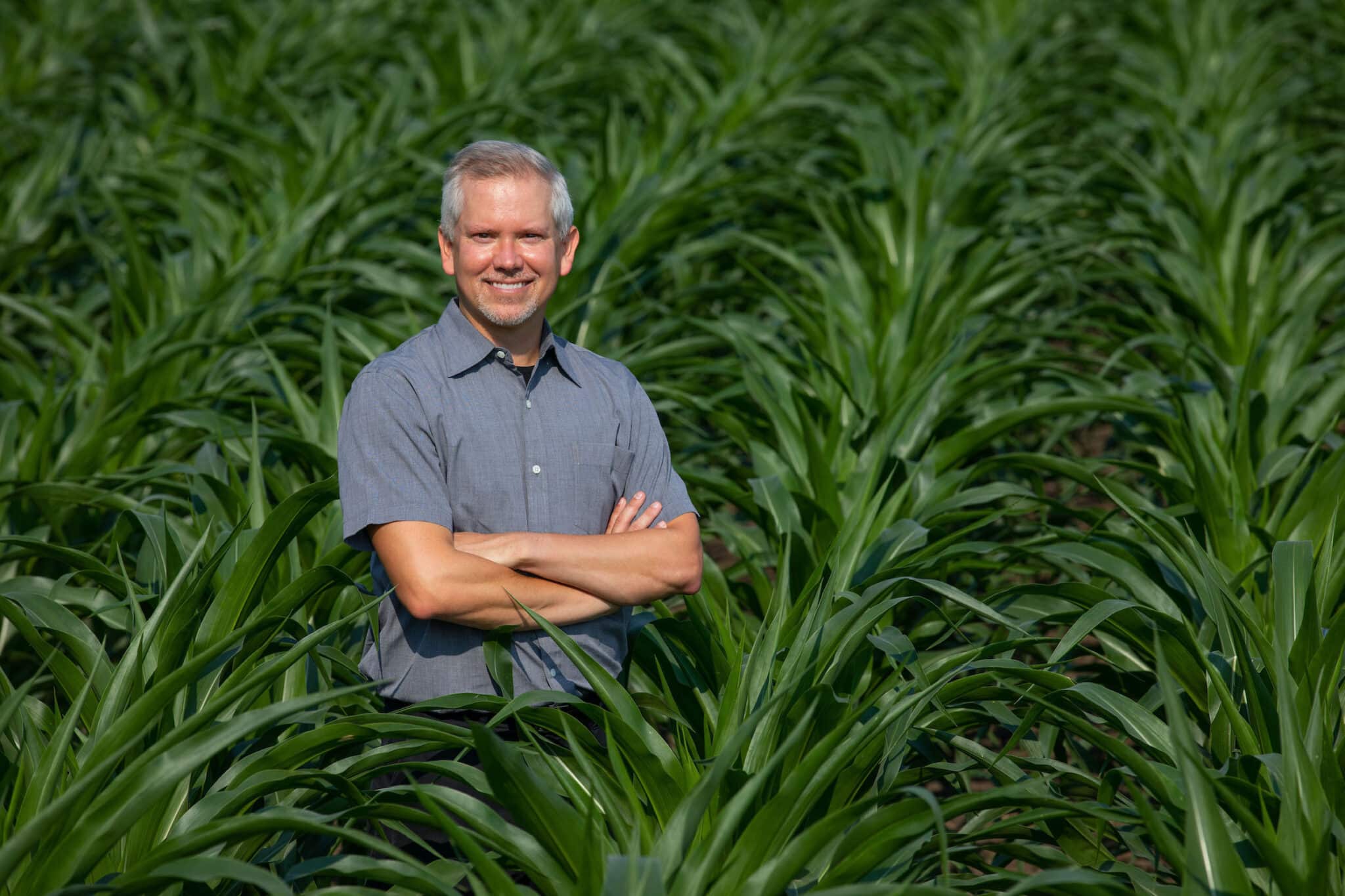The newly assembled genomes of 26 different genetic lines of corn illustrate the crop’s rich genetic diversity and could pave the way for a better understanding of what genetic mechanisms account for crop traits prized by farmers.
The mapping of the 26 genomes is detailed in an article published in the journal Science, and Matthew Hufford, first author of the study and an associate professor of ecology, evolution and organismal biology at Iowa State University, said the genomes will help scientists piece together the puzzle of corn genetics. Using these new genomes as references, plant scientists can better select for genes likely to lead to better crop yields or stress tolerance.
“It’s allowing you to get a much more precise understanding of what’s driving variation of traits,” Hufford said. “If a breeder really wants to select for the right variation to produce a trait they’re interested in, and they only have a foggy view of the genetic causes of variation in that trait, they’re working with their hands tied behind their backs. So we’re giving them a lot more information to go on.”
The first corn genome to be mapped was the genetic line known as B73, a line developed at Iowa State. Patrick Schnable, director of the ISU Plant Sciences Institute; and Doreen Ware, adjunct professor at Cold Spring Harbor Laboratory and USDA research scientist, led the effort to assemble the genome, which was completed in 2009. Since then, B73 has served as the primary reference genome for corn, with a handful of additional genome assemblies becoming available only in the last few years. That means scientists have a limited understanding of genetic sequences in other corn genomes that aren’t present in B73.
“While the first genome was invaluable, providing an initial parts list and partial wiring diagram, we knew it was not complete,” Ware said. “It was critical to develop other genome references to understand the genetic architecture underlying important agricultural traits.”
But the 26 genomes mapped in the new study encompass a wide range of genetic diversity, everything from popcorn to sweetcorn to field corn from various geographical and environmental conditions. This provides much more reference data for scientists combing maize genetics for targets that could lead to better crop performance.
Genetic diversity poses challenges
Hufford said the sheer genetic diversity present in corn created major hurdles for the assembly of the new genomes. He said 85% of the corn genome is composed of transposable elements, or patterns that repeat throughout the genome. Hufford compared those transposable elements to a jigsaw puzzle in which the vast majority of pieces are a single color. All that repetition makes it difficult to figure out how the parts fit together.
“If you can’t find a unique color or shape that tells you where to put the puzzle piece, you’re in a world of hurt,” Hufford said. “But if you get slightly larger puzzle pieces with unique features, that simplifies the process.”
Technological advancements provided just the tools the researchers needed to overcome those hurdles, Hufford said. New sequencing technology allows for longer sequence reads, meaning the pieces of the puzzle are larger and more likely to contain clues that allow the scientists to arrange them properly.
New technology may even allow for the assembly of a pangenome, or a genomic reference that encompasses all the diversity present in corn, Hufford said. He called such an effort “the next frontier” of this line of research.
The research was funded by the National Science Foundation Plant Genome Research Program. The paper includes a total of 46 authors from Hufford and Jianming Yu’s Labs at Iowa State and several other institutions including MaizeGDB, a USDA-funded genomic database also at Iowa State; lead principal investigator Kelly Dawe’s group at the University of Georgia; co-PI Doreen Ware’s group at USDA; Cold Spring Harbor Laboratory in New York and co-PI Candice Hirsch’s group at the University of Minnesota.












